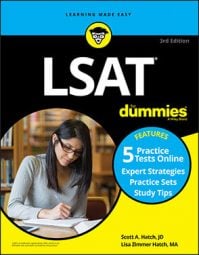When the answers to a logic game question on the LSAT are all numbers, you’re likely dealing with a question that asks how many of the elements could occupy one of the positions in an ordering problem or be a group member in a grouping problem. Usually a question set contains no more than one of this type.
You’ll be glad you spent a little time creating your game board when you encounter a question that asks for how many.
First, check the position on your game board to see whether you’ve eliminated any of the pieces from the position in question.
Eliminate answers that are greater than the number of remaining possibilities.
So if your game board shows that three of six game pieces can’t occupy the position in question, you can eliminate any answer that’s greater than 3.
Test each of the remaining possibilities to see whether an arrangement exists that places it in the position in question without violating a rule.
Choose the answer that reflects the number of game pieces that could occupy the position.
For the sample logic game, you may see a quantity question like this one:
Exactly how many of the disc jockeys could be the one scheduled sixth?
(A)1
(B)2
(C)3
(D)4
(E)5
When you look at the sixth position on your game board, you see that four disc jockeys — G, L, M, and P — can’t possibly occupy that spot. Eliminate Choices (C), (D), and (E). You know that when M → P, only J can be sixth. But it appears that when P →M, H could also occupy the sixth position.
You could trust that both H and J are possible in the sixth position and pick Choice (B). If you wanted to be absolutely sure, though, you could try H in the sixth spot to see whether it works. You could order the schedule like this: L, G, P, J, M, H. That arrangement puts H last and violates no conditions.
So you know for sure that both H and J could be scheduled sixth, and Choice (B) is the answer.
If you’re unable to limit your game board to the extent demonstrated by the example, you may find it helpful to skip the quantity question until you’ve answered a few of the other questions in the set. Sometimes your answers to other questions provide further enlightenment on which game pieces can occupy which positions.
Eliminate as many answers as you can, mark the question to show that you still need to answer it, and go back to it after you’ve answered the other questions in the set.

